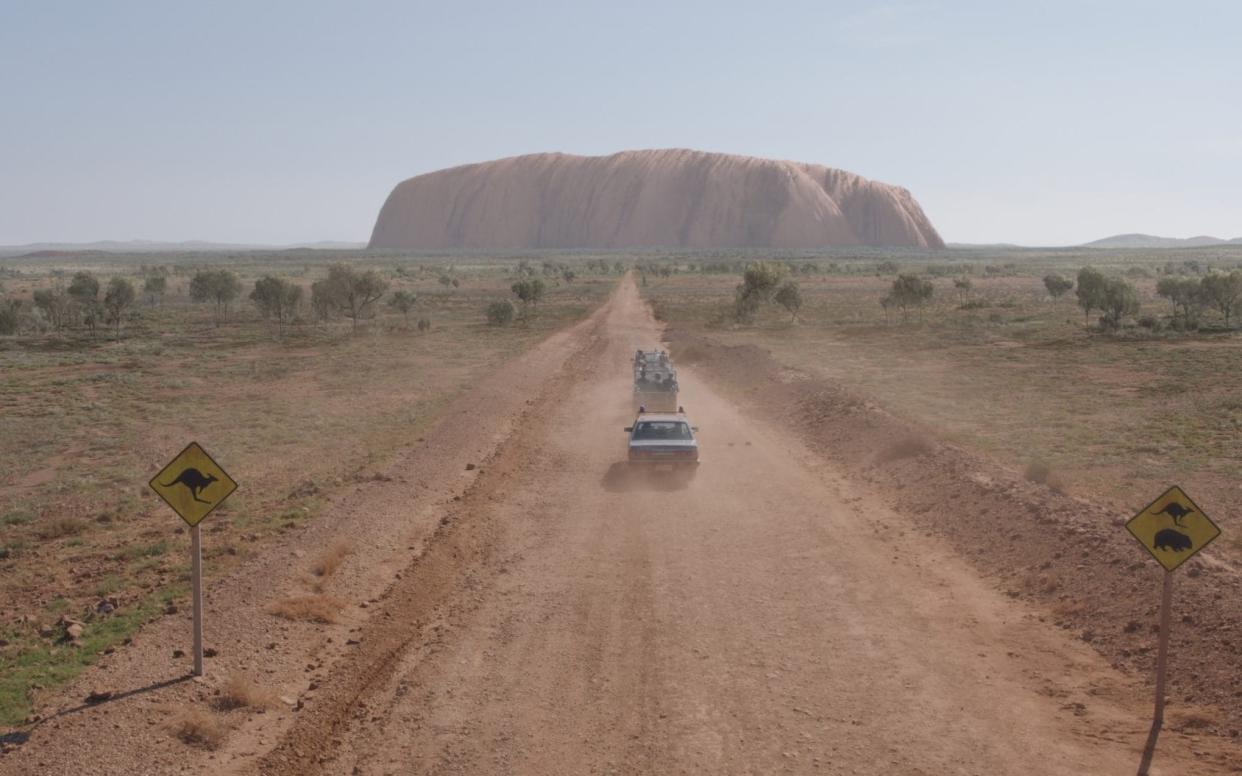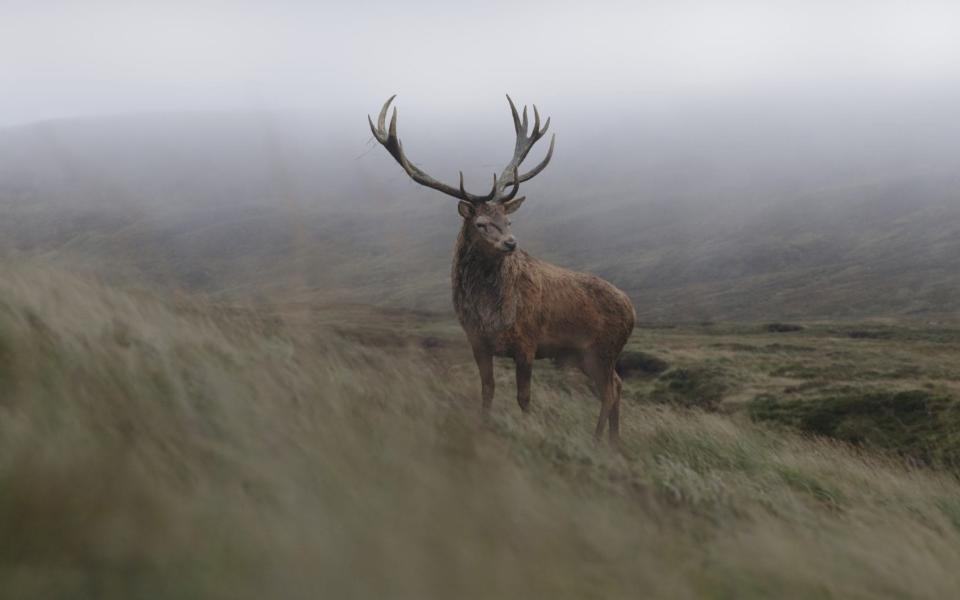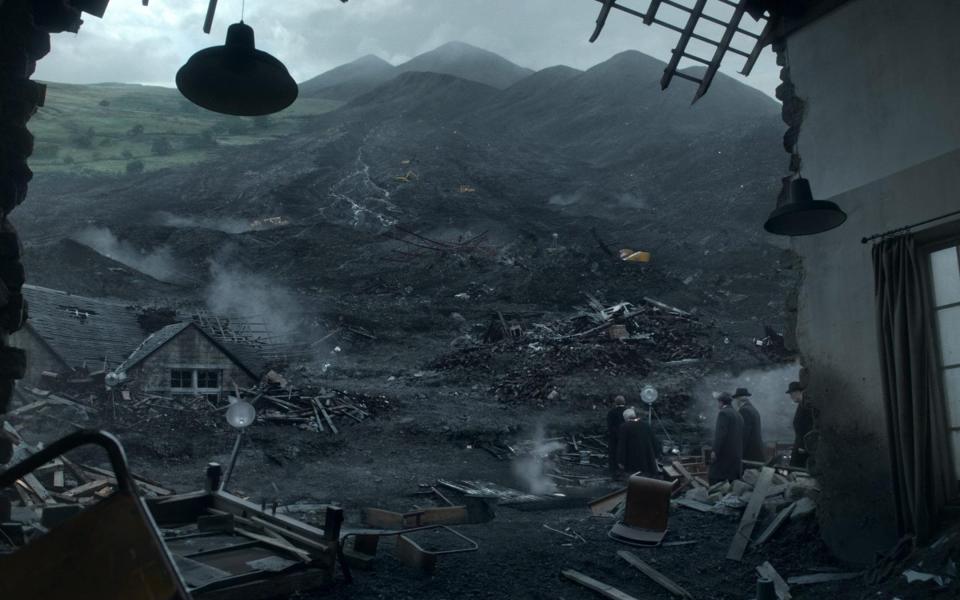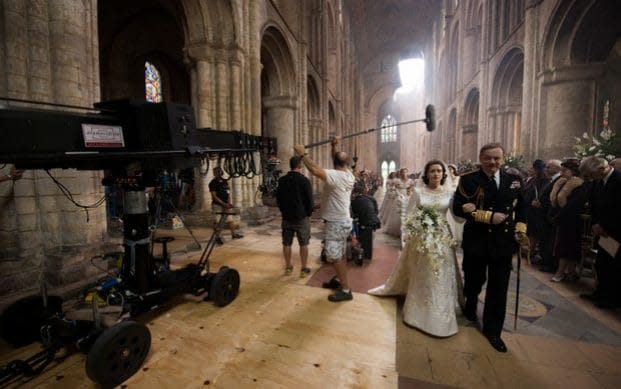How The Crown faked Australia, and almost everything else: the show's VFX mastermind reveals all

- Oops!Something went wrong.Please try again later.
The Crown, at first glance, isn’t obviously a computer-generated bonanza. It’s hardly The Avengers – there are no intergalactic beasts, no planets being destroyed, no flying aliens. The show’s visual effects, though, are secret superpowers.
“After series one, [The Crown’s production company] Left Bank had other production companies calling them, demanding to know how they got permission to film at Buckingham Palace,” laughs Ben Turner, the show’s Visual Effects Supervisor. “They said, ‘How did you manage that?’ And Left Bank said, ‘We didn’t. It’s VFX.’ I’ll take that compliment.”
Much of The Crown, creator Peter Morgan’s dramatic take on the Windsor dynasty, is filmed on soundstages in Elstree Studios. You wouldn’t know it – on screen, every sumptuous inch of every splendid building looks like the real thing. Bits of them – or replicas, at least – live at Elstree. There, the ground floor façade of 10 Downing Street overlooks Buckingham Palace’s gates and arch. The rest of the exteriors, pretty much, live in computers. It’s a very different and possibly more daunting challenge than that of the work that goes into Marvel’s extravaganzas. With them, you have to suspend your disbelief and buy into the fantastical. The Crown presents an illusion of reality that everybody already knows all too well. It has to be flawless.
“I like for somebody to just not know that I’ve done anything,” says Turner, a modest, humble craftsman, of what he calls the show’s “invisible” effects. “I like slightly fading into the background. It makes my day if someone says, 'You do CGI for The Crown? What CGI is there in that?!'” He even shows his wife what images looked like before and after he worked on it, to prove that he did anything at all. “Watching the show, I say, 'That's us,' and she says, 'What?' I show her the work so she can see that we created a crowd, or an aeroplane, or an airport. We're extending the world.”
With The Crown being a period piece – albeit increasingly less so – some of the work done by Turner and his team involves removing rogue elements that exist in today’s world – modern street signs and road markings are dumped into the digital dustbin. Other elements are created from scratch. For the new fourth series, which takes us behind closed doors on Charles and Diana’s tumultuous mismatch, we visit Australia for their 1983 tour. Uluru, aka Ayers Rock, looks predictably majestic. It wasn’t there.
“We went to Spain for the light and the heat, the sunshine,” admits Turner. There they filmed on a dusty track that served well enough for the approach to Uluru, which was itself a digital matte painting. The crew found a hill for Charles and Diana to climb, but it wasn’t quite large enough to match the Australian reality, and the dirt was the wrong colour, and a recent rainstorm had softened it. “So we ended up replacing almost everything,” says Turner. New colour, new texture, new dust, shrub removal. On screen, you don’t question it. Invisible effects.
Turner began work on series four in July 2019, and finished this September. He is on each one from the start, way before filming, from when Morgan delivers the scripts. He needs the time for research, much of which involves amassing an enormous photographic archive.
“A slightly tricky thing about The Crown is that so many people know exactly what these things look like,” he explains. “They're very much in the public consciousness. You couldn't do a bad Buckingham Palace, because you'd just get slaughtered. So there's pressure there.”

His team, then, have countless photos of the Palace, which they took themselves, masquerading as tourists. And then there are more official processes. Series two involved Prince Philip touring the Commonwealth for half a year on the Royal Yacht Yacht Britannia. Turner visited the Britanniaat its home in Edinburgh, his team taking “a couple of thousand photographs”, but also got permission to fly a drone around the boat, capturing it in detail from all angles. From this, they created a completely computer-generated version.
Peter Morgan presumably writes whatever he wants, with no regard to what might be possible from a visual effects perspective. “Yes,” chuckles Turner. “He doesn't consult me on what we can achieve, he writes it and leaves it up to us.” Does Turner ever read the scripts and wonder how the hell he’s going to do something? “Yeah! Every year!” he laughs. The biggest challenge – and the sequence he’s proudest of – was recreating the Aberfan disaster for series three, when a colliery spoil tip collapsed and killed over a hundred people in the Welsh village.
“I read that script with my jaw on the floor, just going, 'That's a huge undertaking,'” he remembers. “To recreate the world in a believable way. Surrounding this village with coal tips, and then having a huge one collapse and crush a school. That's pretty daunting. I read it going, 'How are we going to do that?' All I kept thinking was, 'If I don't do a good enough job then it's going to ruin everyone else's work.’ It was a massive pressure. Just to make it believable and do it justice for the community. I'm as relieved as much as I am proud that it was a success.” It was one of the most acclaimed episodes of the show.

What Turner loves the most about working on The Crown, he says, is that every series throws up such challenges, let alone the era-hopping each time. Season four has thrown up yet more elaborate tasks for him, including a computer-generated stag at Balmoral, and a heart-stopping simulation of the IRA’s 1979 bombing of Lord Mountbatten’s boat.
There have been surprises from the start – and ingenious trickery. For the Queen’s coronation in 1953, much of the sequence was shot in Cambridge’s Ely Cathedral, as filming is forbidden in Westminster Abbey. The coronation itself was filmed on a greenscreen stage at Pinewood Studios. But the episode also incorporated actual archive footage of the coronation, with Turner’s team placing Claire Foy, who played the Queen in the first two seasons, within it.
“It was the moment when she was leaving the coronation, the big procession at the end,” says Turner. “There was a shot from the archive that the director Philip Martin really wanted to feature – he wanted to zoom into the Queen and have that play out on her uncle's TV screen as he watched it in France.” To make this work, the VFX team studied the archive footage, made approximate calculations of the camera heights, had the set built, and matched the carpets and personnel.

“Then we got Claire to do the walk down these steps. I was there with her – we were looking at the archive and she was trying to match the Queen's movements. And then in post-production we married the two things together. We cut out Claire and some people around her and replaced the Queen in the archive.”
Matching queen to queen didn’t end there. When Olivia Colman was cast as the older Elizabeth for series three and four, the plan was to change Colman’s eyes to blue, as are Foy’s, as are the actual Queen’s. Pretty soon, though, this was jettisoned. “We did tests on some of the early camera test footage that Olivia did. We changed her eyes to blue, but it had a weird effect. Olivia looked strange and it took away some of her performance, because so much of her performance is in the eyes, and it put a bit of a filter on that. So we quickly made the decision to not go with it.”
This decision is a good example of why The Crown is such a success. For all of its efforts to recreate reality it is, fundamentally, a piece of entertainment – a family drama. If you don’t buy into the performances, the whole thing dies. Eye colour be damned. Reality: it’s subjective after all.
Season four of The Crown is now available on Netflix

